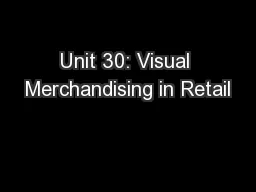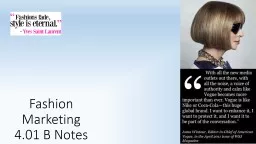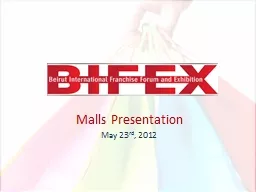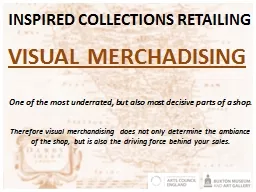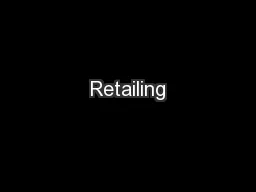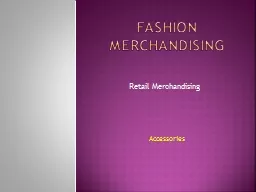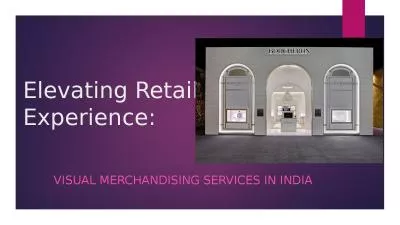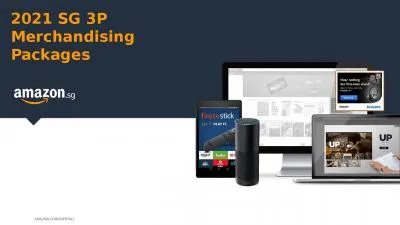PPT-Unit 30: Visual Merchandising in Retail
Author : briana-ranney | Published Date : 2016-05-30
Starter Activity 10 mins In groups For the type of retail outlet your group has been provided with list 6 key points about the environment which would encourage
Presentation Embed Code
Download Presentation
Download Presentation The PPT/PDF document "Unit 30: Visual Merchandising in Retail" is the property of its rightful owner. Permission is granted to download and print the materials on this website for personal, non-commercial use only, and to display it on your personal computer provided you do not modify the materials and that you retain all copyright notices contained in the materials. By downloading content from our website, you accept the terms of this agreement.
Unit 30: Visual Merchandising in Retail: Transcript
Download Rules Of Document
"Unit 30: Visual Merchandising in Retail"The content belongs to its owner. You may download and print it for personal use, without modification, and keep all copyright notices. By downloading, you agree to these terms.
Related Documents

